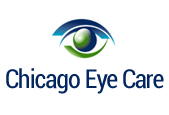Glaucoma is a vision-threatening disease that can cause optic nerve damage. This most often occurs from high pressure caused by poor drainage of a fluid formed in the eye, aqueous humor, which supplies nutrients to the cornea and lens. Glaucoma is one of the leading causes of vision loss. Because it involves progressive and irreversible damage to the optic nerve, it is important to catch this disease early.
There are two basic types of glaucoma. They include:
Open-angle glaucoma is the most common type that occurs in approximately 90 percent of those who suffer from the disease. This condition can develop gradually and be undetected for years. It can slowly cause vision loss. Treatment typically includes medications (drops) and sometimes surgery is indicated.
Closed-angle glaucoma (also called angle-closure glaucoma), which is much more rapid in the onset. This type affects less than ten percent of glaucoma patients. Symptoms occur suddenly and are much more severe, but vision can be preserved with prompt, effective treatment. Treatment often includes laser.
Glaucoma Symptoms
Open-angle glaucoma signs and symptoms include:
- Gradual loss of peripheral vision, usually in both eyes
- Tunnel vision in the advanced stages
Closed-angle glaucoma signs and symptoms include:
- Severe eye pain
- Nausea and vomiting along with severe eye pain
- Sudden onset of visual disturbance, often in low light
- Blurred vision
- Halos around lights
- Reddening of the eye
Glaucoma Causes
In open-angle glaucoma, the drainage channels in the angle (called the trabecular meshwork) are partially blocked, causing the aqueous humor to drain out of the eye too slowly. The exact cause of open-angle glaucoma remains unknown.
Closed-angle glaucoma occurs when the iris protrudes forward to narrow or block the drainage angle formed by the cornea and the iris. As a result, aqueous fluid can no longer reach the trabecular meshwork at the angle, so the eye pressure spikes suddenly.
Sometimes, glaucoma can be traced to a known cause, such as ocular trauma, inflammation, tumor, advanced cataract or diabetes.
Risk Factors
- Intraocular pressure
- Age
- Family history
- Ethnic ancestry
- Nearsightedness or Farsightedness
- Past eye injury
- Other ocular conditions
- Other Medical conditions
Treatment Options for Glaucoma
Fortunately, glaucoma is highly treatable. The key to preventing serious vision loss or blindness from glaucoma is early detection. An annual, fully dilated eye examination by your ophthalmologist (Eye MD) is recommended.
Treatment involves medications, laser procedures and/or surgery to lower internal eye pressure by opening drainage passageways for the trapped fluid. A complete annual eye exam is the best and earliest means to detect glaucoma.
In early stages of open-angle glaucoma, medicated eye drops are usually prescribed to lower the eye’s pressure. If the condition worsens, a laser procedure called a trabeculoplasty is sometimes performed to lower pressure further.
The treatment for angle-closure glaucoma, or narrow-angle glaucoma, is generally initiated with laser iridotomy to open the drainage channels of the eye.
Resources:
- www.geteyesmart.org
- www.glaucoma.org
- www.glaucomafoundation.org
GLAUCOMA FAQ
How do I know if I am at risk for glaucoma?
There are groups of the general population are at risk for glaucoma. They include advancing age; African Americans; siblings or children of glaucoma patients; people who are extremely nearsighted or farsighted; and patients with blood flow problems such as those with diabetes, migraine patients and those with low blood pressure.
Can glaucoma be prevented?
No. However, if glaucoma is detected early, damage to the eye can be minimized.
Can you test for glaucoma?
Yes, typical work up includes ocular pressure testing, dilated nerve exam, a visual field test and optic nerve analysis. The tests are non invasive and the results are available immediately. Results of the test will be discussed with you by your Ophthalmologist during your visit.
Can glaucoma be treated?
Yes. With early detection and treatment, we can usually prevent serious vision loss or blindness from glaucoma.
What are the treatment options for glaucoma?
There are a number of highly effective treatment options for glaucoma patients. Most patients are started on eye drops as the initial treatment. Laser therapy may be appropriate for certain forms of glaucoma. Finally, if medical or laser therapy fails to control the disease, surgical therapy may be necessary.
Fortunately, with early detection, most forms of glaucoma can be successfully treated and visual loss may be stopped.
The physicians and surgeons at University Ophthalmology Associates have the latest in diagnostic and treatment options available for the earliest detection and most effective treatment. All of our doctors are board certified and highly qualified to diagnose and treat glaucoma.
For more information about glaucoma, or to schedule a glaucoma screening, please call 312-942-2734 for our downtown location and 847-677-8989 for our Skokie location.



